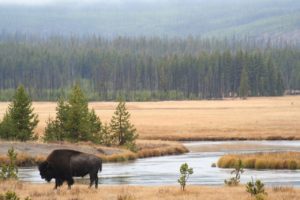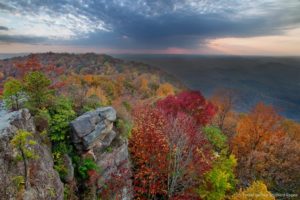We have much more to do and your continued support is needed now more than ever.
Why We are Fighting for the Public Lands that Wildlife Depend On

Our wild and working public lands provide crucial habitat for wildlife and a space for people to connect to nature.
Despite widespread support to keep public lands in public hands, challenges continue. Right now, members of Congress are pushing measures to take millions of acres of public land and waters out of the public domain, open them up broadly for oil and gas operations, and even roll back or block national monument designations.
Because the attacks on our public lands have become more extreme, it is important to understand why these areas are worth fighting for!
What are public lands?

While the 59 national parks – like Grand Canyon or Yellowstone – immediately come to mind, public lands also include scenic rivers, wildlife refuges, national marine monuments and wilderness areas. More than 640 million acres across the U.S. are ‘public lands’ – meaning they are owned by the American people. The National Park Service, Bureau of Land Management and the U.S. Forest Service manage these lands for multiple uses, including recreation and wildlife.
Some public lands have always been public. The U.S. acquired them through purchase or as the result of war. Other public lands were set aside by Congress. In other cases, a president used the 1906 Antiquities Act to establish national monuments.
How the land is managed depends primarily on its designation:
- National parks are mainly developed for recreation, hiking or camping, and have strict controls prohibiting hunting or off-road use.
- Wildlife refuges are lands and waters set aside specifically to conserve fish, wildlife and plants and are managed by the U.S. Fish and Wildlife Service.
- National monuments are geographic areas of land and waters or historic areas that are given permanent protection by Congress through legislation or the president through use of the Antiquities Act.
- Human activities in wilderness areas are limited to non-motorized recreation, scientific research, and other non-invasive activities.
- Other vast, wide-open tracts – including open range land and national forests – are managed by the National Forest Service and Bureau of Land Management, and include vital wildlife habitats and corridors plus places for hunting and fishing. Both agencies also oversee leases for grazing, logging, oil and gas operations and mining
Why are public lands important for wildlife and people?

In our increasingly urbanized world, our public open landscapes provide places for all of us to camp, hike and connect with nature. They also provide habitat for fish and wildlife.
These vast spaces support a diversity of wildlife—from predators like wolves and grizzly bears to herds of elk and caribou, to birds like the greater sage-grouse. Public land also provides habitat for endangered species like Hawaiian monk seals, sea turtles and Sierra Nevada big horn sheep.
Clean water and clean air are also tied to public lands. Public lands include wetlands, headwaters and streams that are a major source of drinking water for Americans and wildlife. U.S. forests currently serve as a carbon “sink,” offsetting approximately 10 to 20 percent of US greenhouse gas emissions each year.
Why are public lands under attack?
Opponents of federally managed lands argue that states and counties are better equipped to control these lands.
They support the widespread transfer of federal land to the states. A bill passed in January would pave the way by no longer requiring Congress to account for the lost revenue when the federal government gets rid of public lands.
“Not only is this (change) fiscally irresponsible,” said Rep. Raul Grijalva, (D-AZ), in a statement, “but it is also a flagrant attack on places and resources valued and beloved by the American people.”
The problem is transferring federal lands to states does not guarantee they will continue to be available to the public. State lands, held by state governments, are operated to generate money. They are not owned by all Americans in the same way as public lands nor do the same rules for managing or selling them apply. If it makes economic sense for a state to lease land for development, logging or oil and gas operations, they are within rights to do so. Federal environmental laws requiring public input and notice and certain management standards wouldn’t apply.
How do we keep public lands in public hands?
With your help, we will continue to push Congress and the Trump Administration to keep our public lands in public hands.
Take action: You can do your part by asking your members of Congress to oppose any effort to undermine our public lands.
Take Action





















